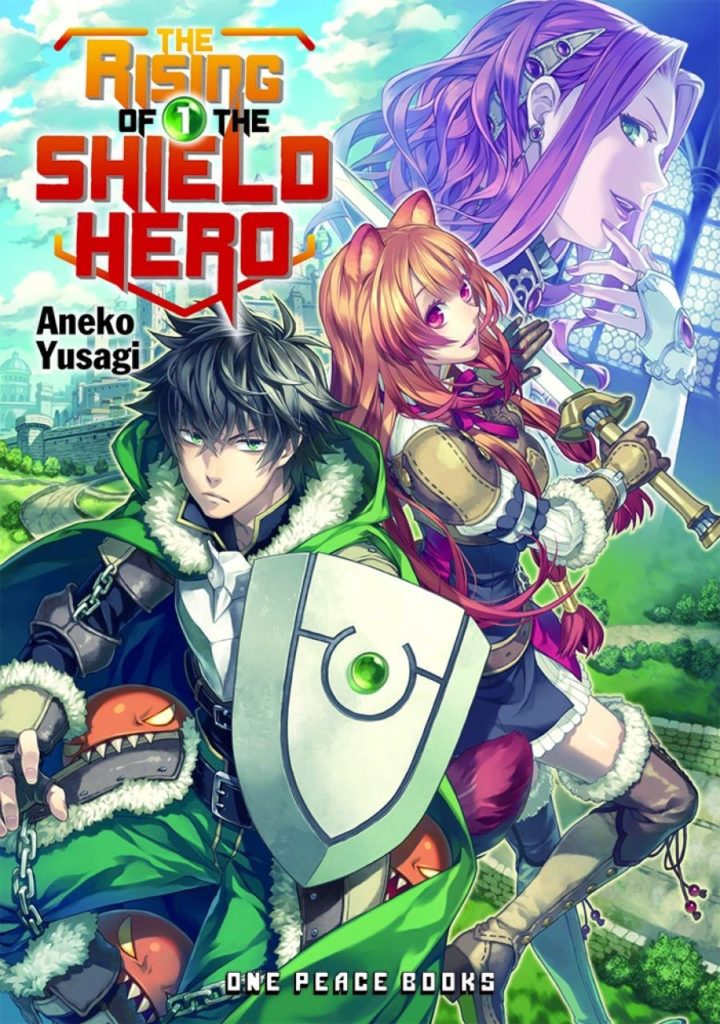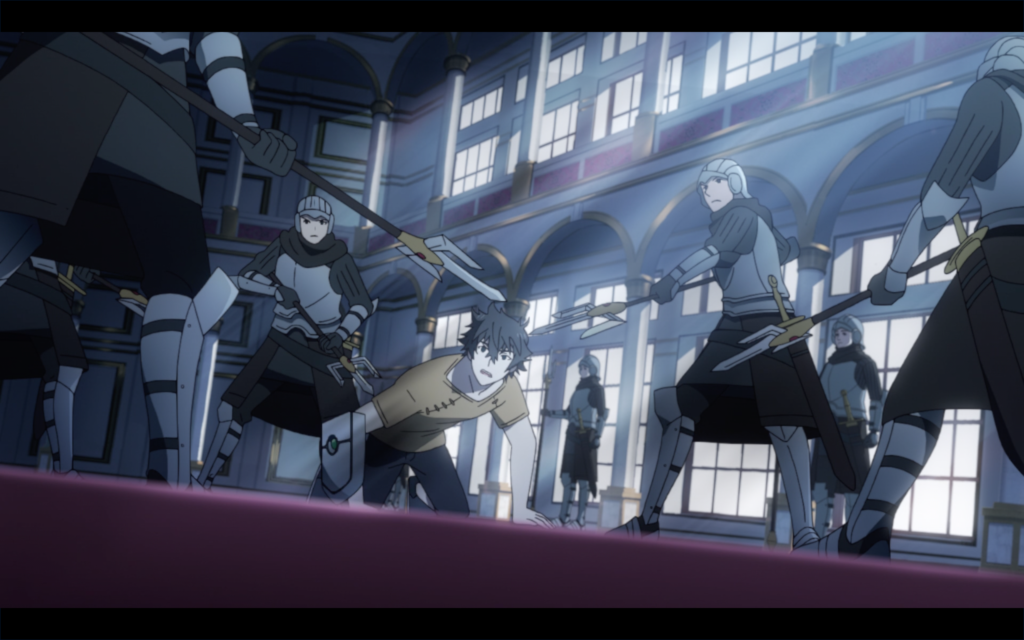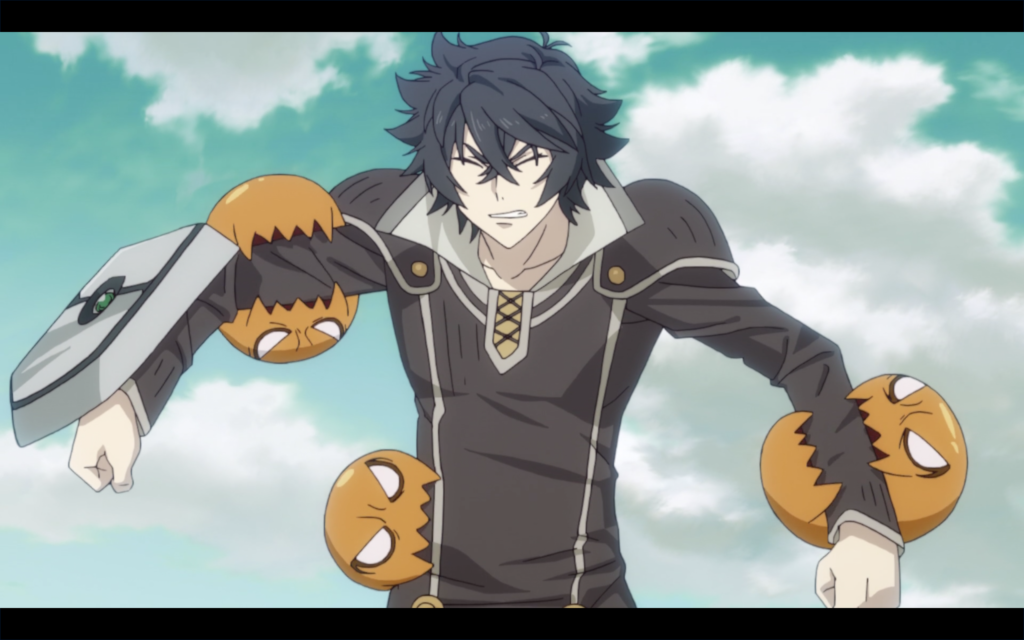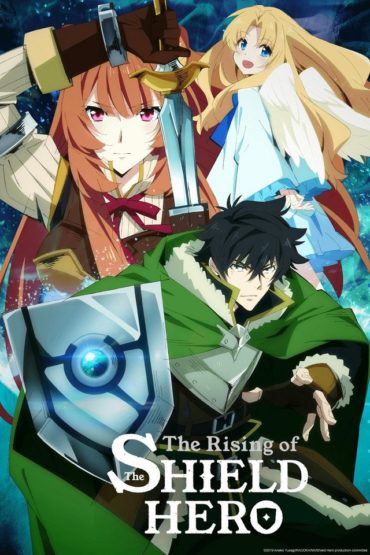Why The Rising of the Shield Hero’s Anime Is Better Than the Original Light Novel
Last Wednesday saw the first episode of highly anticipated The Rising of the Shield Hero released on Crunchyroll. As the show has started to air, there has been a lot of discussion around the series, the things it does and the concepts it stands for. As a fan of the isekai genre the series is home to, I decided to read the original light novel and see how the anime compares to it.
Before we proceed: This article contains some spoilers for both the first light novel and anime episode, so if you wish to remain unspoiled then click away now!
The set-up
For those who don’t know, The Rising of the Shield Hero follows 20-year-old protagonist Naofumi Iwatani who lives a carefree life as a college student – right up until the day he finds and reads a mysterious book at his local library. This book tells the story of four legendary heroes who are summoned to save the kingdom from a grave evil. While reading the book, Naofumi is suddenly sucked into it and awakens in what appears to be the kingdom that the story is set in. It seems that he and three others (Motoyasu Kitamura, Ren Amaki, and Itsuki Kawasumi) have been brought into this world to wield the four legendary weapons: Spear, Sword, Bow and Shield. Naofumi is the Shield Hero, and gets off to a poor start in this world when only one person wants to join his party – and then later betrays him. Hurt and alone, Naofumi ends up deeply resenting the people he has encountered – but with no way to return, he is still duty-bound to fight against the waves of destruction threatening to end this world…
For those of you who are familiar with the isekai genre, The Rising of the Shield Hero is a fairly stereotypical entry. It’s set in a world that appears to be quite low tech and medieval, whose people are facing some sort of major problem and feel there’s no choice but to summon heroes to fight their battles. Naofumi and the other heroes are initially excited for their time in this world and rise to the challenge, but it quickly becomes apparent that there is something unusual about the Shield Hero and how the people of this kingdom see him.
After being summoned, the four heroes spend an evening together talking and it’s soon obvious that Naofumi’s situation is vastly different to that of the others. First off, the four heroes share facts about the Japan they each came from and discover that they all seem to have come from alternative versions of the country, and in their Japan, each hero played a video game of some sort which is almost exactly like the story the four are now wrapped up in. In the light novel, there’s also a scene where the three heroes beside Naofumi seem to have died in unfortunate accidents just before awakening in this world, something which Naofumi doesn’t have in common. This scene didn’t make it into the anime, so maybe it’s not relevant or will pop up as a point of interest later. However, what I found unusual about this whole sequence is how the characters are written. Both in the light novel and anime, things are going well between the heroes at first, but partway into their conversation everyone rounds on Naofumi, confused about his lack of knowledge on this world and how poor the Shield Hero’s role is said to be. It’s such a huge change in terms of personality that it throws the viewer for a loop, and honestly brings me to the biggest hurdle The Rising of the Shield Hero has to overcome: the writing.

The quality of the writing
As stated earlier, I decided to read the first light novel entry in this series shortly after watching the first episode – and I was surprised to see how poor the quality of writing was. The story seems to be narrated by Naofumi in the future, although it is hard to tell. I think the idea is that the heroes are all meant to get along quite nicely to begin with, but also make subtle nasty or questionable comments about the Shield Hero, so you start to suspect there’s something not quite right there. As previously mentioned, this just seems like a huge change in personality for everyone involved, but the anime does go to more lengths to try and make it work. A few extra scenes of the other heroes and Naofumi interacting are added in to make you believe that the bond between them is friendly. All of this is to make the eventual betrayal Naofumi goes through more believable.
So, I’m sure that those of you reading this will know what happens between Naofumi and his first party member: Myne. Ultimately, she rinses Naofumi for all he’s worth, steals all his belongings and reports him to the castle, falsely accusing him of rape. Due to her familiar tone with Motoyasu, it seems as though the two were working together to take advantage of Naofumi, although a side story in the back of the first volume debunks this theory for me because it paints a different picture of what happens, with Motoyasu reflecting back on the sequence. Despite Naofumi’s objections, no one will listen to a word he has to say, and the king admits that he’d be sentenced to death if he wasn’t one of the heroes. The main thing about this sequence is that it isn’t very well thought out for a variety of reasons – the most important for me being the stigma around the Shield Hero. As the episode runs and the light novel goes on, we get bits and pieces that suggest there is something untrustworthy about the Shield Hero and hints as to why Naofumi has such a hard time from the start, but this is never explained clearly enough and ultimately just leaves the whole thing confusing – because surely someone will speak up for Naofumi and the fact that he doesn’t even have any clothes to his name now?
Many have tried to argue that rape, and false rape allegations in particular, should never have been used as a plot device. As someone who reads a lot of stories in this genre, sexual assaults or similar are a plot point that I’m, sadly, used to reading even if I don’t agree with its usage. It wasn’t long ago that Sword Art Online author Reki Kawahara apologised for his repeated use of sexual assault in the series and explained that he uses it because it was a trend in the books he read during middle school. That trend is almost certainly why The Rising of the Shield Hero and other stories like it still use it to this day, especially when you consider that The Rising of the Shield Hero started back in 2013 – so even if the genre has moved on, we wouldn’t necessarily see it in the anime adaptions currently happening.
Others have tried to argue that the author, who uses a feminine pen name and stays otherwise anonymous, is a female and wanted to speak out about something they believe in. Personally, I don’t believe that gender influences someone’s story and Anime News Network reporter Kim Morrissy wrote an excellent blog post on why we shouldn’t assume the author’s gender or build arguments based on it. My stance is that, frankly, it doesn’t matter who Aneko Yusagi is behind the pen name because, honestly, The Rising of the Shield Hero is so poorly written that it’s impossible to draw any conclusions about what the author was ultimately aiming for. Nothing present in the story, in my opinion, is something written just because the author could be one gender. It’s all fairly stereotypical and uses elements I’ve seen from both male and female authors elsewhere.
I think the author was going for a dark series with a bitter hero, the like of which didn’t exist in light novels at the time. In fact, the closest examples are Overlord in 2010 and The Saga of Tanya the Evil, which came out in 2013 after The Rising of the Shield Hero. I also think that a lot of the problems present with the writing stem from the fact that the author seems to write with an end goal in mind but without necessarily considering how their characters should or would act in a given situation. Given there are 20 volumes of this series at present, I assume that this probably gets better in the future as the author gained more experience (especially given that a lot of the issues do seem the fault of someone in their early stages of the job), but for now that’s how the first volume came off to me.
Although I’m only going to touch on this briefly because it doesn’t come into play until the end of the first episode, I also wanted to point out that Naofumi buying a slave is also not unusual for a series like this. Ultimately it’s handled in other series with more sensitivity and to ‘rescue’ the slaves, but this author doesn’t yet have the ability to portray that and I think the anime will probably do a better job with it, hopefully. In the end it all feeds back into making Naofumi as bitter and twisted as possible, only to try and redeem him (and/or humanity) later. I do my best to avoid series where slavery is involved and I certainly don’t like the trope, but I can see why it’s being used here even if I don’t agree with it.

How the anime is improving on the series
Comparing the light novel and its anime counterpoint, I can say that the anime (handled by studio Kinema Citrus) is improving on a lot of issues I had with the book. Naofumi isn’t a very likable protagonist, but the anime has added in some small details to change that a little bit. Scenes have been added to show our hero really excited for his adventures in this world before his betrayal and even afterwards, when he’s at his darkest, Naofumi is still portrayed as having some good in his heart in scenes not originally present in the book. This helps prevent the viewer becoming completely turned off Naofumi while also offering a compelling narrative.
Adding more scenes with all four of the heroes also helped the betrayal hit home harder. Of course the characters still swapped between ‘good’ and ‘bad’ personalities at the drop of a hat, but frankly the studio have done a good job, given the source material they have to work with.
The one real problem is that they cut down a section when Naofumi is initially reading the book before being summoned into this world. As he does so, he comes to a picture of the princess and simply comments that she ‘seems kind of slutty’ to be the heroine. In the light novel he makes this comment because reading her page reveals that she makes eyes at all the heroes and seems to sleep around, but with no context, the comment comes off incredibly badly in the anime. I’ve heard that this is an important plot point later, so I really wish the anime hadn’t cut it down so much and, if it’s important later, there was a very good reason for it being present at all.
That said, I do like the anime adaption so far. It has a lot to work with and it might have gotten that scene wrong, but I think it will do the story justice and bring it to life in a way that the light novel couldn’t properly portray. After Naofumi’s betrayal, the world seems dark and untrustworthy – something I’m eager to see the anime tackle, because a lot of how we see the world is influenced by Naofumi’s mindset. There’s a pinnacle point in the first light novel where this begins to open out and I’m excited to see how the anime handles it.

For better or worse, The Rising of the Shield Hero will be around for 25 episodes, and with so much ground to cover, I’m actually quite excited to see what twists and turns the story holds. Now that the characters have more distinct voices (thanks to the work of the various VAs), it’s easier to get my head around who’s doing what and why – something that the light novel really does struggle with. I’m not saying that the anime can magically solve all the issues this franchise has, but honestly, from what we’ve seen in the first episode, I think it can turn the source from a subpar isekai into something ranging between average and quite enjoyable. If nothing else, I’m optimistic that any battle scenes in the near future should look beautiful as the fluid movement and striking animation has already caught my eye in the first episode.
In the end, I think it’s worth sticking with the anime a little longer to see what it does. I’m sure I’ll be returning to the source material after the anime ends if I like what I see, and I’m glad I gave the show a chance rather than listening to the outcry in the community. It’s not perfect, it might not even be ‘good’, but I genuinely find something compelling about the whole thing under the rough edges. I hope that maybe other isekai fans can too.


